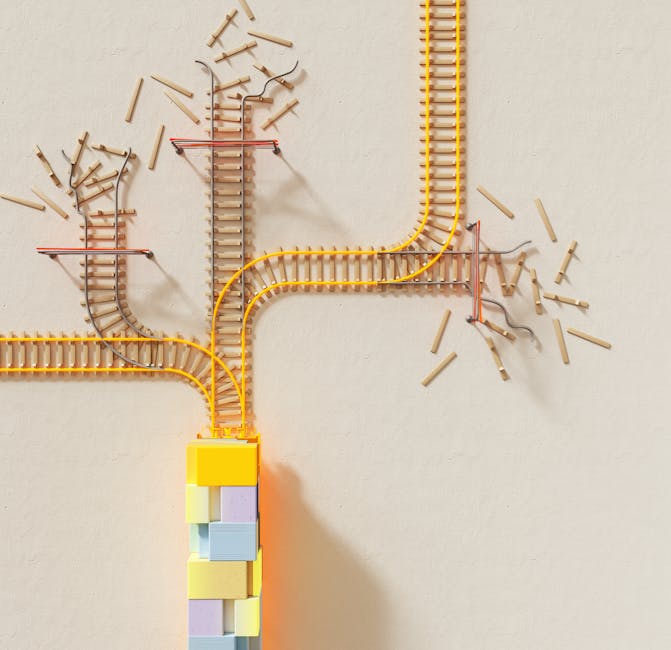The design world is undergoing a dramatic transformation. Artificial intelligence is no longer a futuristic fantasy; it’s a powerful tool reshaping how designers work, from logo creation to website layouts and beyond. But while AI is undeniably boosting design efficiency and intelligence, a crucial question remains: can it replace the human element of creativity? The answer, unequivocally, is no. Let’s explore how AI is enhancing the design process while emphasizing the irreplaceable nature of human creativity.
AI’s Role in Smarter Design:
AI’s impact on design is multifaceted. Several key areas illustrate its growing influence:
Automation of Repetitive Tasks: AI-powered tools excel at automating time-consuming tasks like image resizing, color palette generation, and basic vector manipulation. This frees up designers to focus on higher-level creative problem-solving and strategic thinking. Imagine spending less time on tedious edits and more time conceptualizing innovative design solutions. This increased efficiency translates to faster turnaround times and potentially lower project costs.
Enhanced Design Exploration: AI algorithms can generate numerous design variations based on specific input parameters. This allows designers to explore a wider range of options than ever before, identifying unexpected and potentially groundbreaking design directions. Tools using generative AI can provide countless iterations, helping designers refine their concepts and push creative boundaries. This exploratory phase is significantly accelerated, leading to faster prototyping and iteration.
Data-Driven Design Decisions: AI can analyze vast amounts of data, including user behavior, market trends, and brand preferences, to inform design choices. This data-driven approach ensures designs are more aligned with target audiences and business objectives, resulting in more effective and impactful designs. Understanding user preferences through AI analysis leads to improved user experience and ultimately, higher conversion rates.
Accessibility Improvements: AI tools are assisting in creating more accessible designs. Features like automated alt-text generation for images and intelligent color contrast suggestions help ensure designs are inclusive and usable by a wider audience. This commitment to accessibility is crucial for building a more equitable design landscape.
The Irreplaceable Human Touch:
Despite the remarkable capabilities of AI, human creativity remains essential. Here’s why:
Emotional Intelligence and Intuition: Design isn’t just about aesthetics; it’s about evoking emotions and telling stories. AI lacks the emotional intelligence to truly understand and resonate with human experiences, which is crucial for creating designs that connect on a deeper level. Human intuition plays a vital role in making subjective design choices that are both effective and emotionally resonant.
Conceptualization and Innovation: While AI can generate variations, it struggles with the initial conceptualization process. The spark of a truly innovative idea—the “aha” moment—comes from human imagination and creative thinking, not algorithms. AI can be a powerful tool, but it’s a tool guided by the vision and creative direction of a human designer.
Critical Thinking and Problem-Solving: Design often involves solving complex problems within constraints. AI can assist with certain aspects of problem-solving, but it lacks the critical thinking skills to navigate ambiguous situations or adapt to unforeseen challenges. Human designers bring experience, judgement and a nuanced understanding of the design problem itself, creating solutions that go beyond simply satisfying requirements.
Adaptation and Refinement: Even the best AI-generated designs often require human refinement. AI may lack the subtlety and nuance to fine-tune details, ensuring a cohesive and polished final product. The human designer adds that crucial touch of perfection, ensuring the final design is flawless and aesthetically pleasing.
The Future of Design: A Collaboration
The future of design isn’t about AI versus humans; it’s about AI and humans working together. AI serves as a powerful tool to enhance efficiency and exploration, while human creativity provides the vision, emotional intelligence, and critical thinking necessary to create truly impactful and meaningful designs. By embracing this collaborative approach, the design world can unlock unprecedented levels of innovation and effectiveness. The ideal scenario sees AI handling the grunt work, freeing designers to focus on the truly creative aspects of the design process. This partnership between human ingenuity and artificial intelligence represents the most exciting frontier in design.


